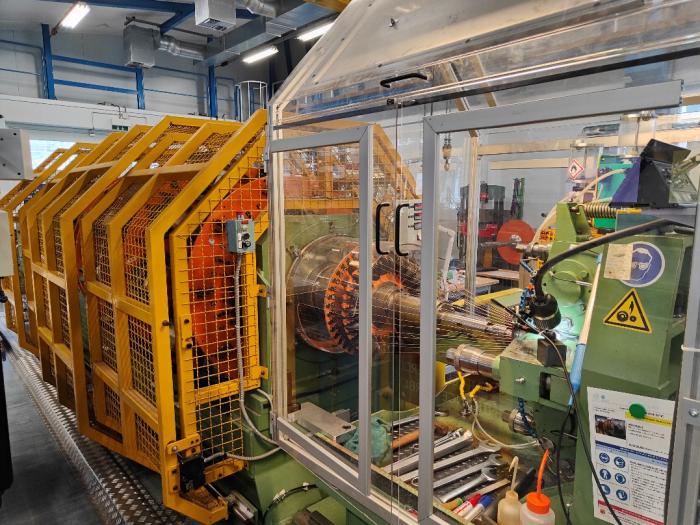By Angelo Bonasia, Jerome Fleiter and Thierry Boutboul (CERN)
The production of all sixty series Nb3Sn superconducting Rutherford cable lengths marks an important milestone for the manufacturing of the Insertion Region MQXFB magnets of the HL-LHC. Each cable unit length is 750 m long whilst ensuring very tight dimension tolerances. The production represents 45 km of Rutherford cable, incorporating almost 2000 km of Nb3Sn strand, and is the conclusion of a long journey spanning over ten years!
Following the first copper dummy cabling trials in 2012-2014, the fabrication of the first cables for the short model coils in 2015, and the manufacturing of the prototype cables in 2016-2017, the series production started in 2017 and lasted more than eight years.
Following their manufacturing, the sixty cable unit lengths have already been insulated and all but one have been wound into coils.
The MQXFB magnets are part of the Q2a and Q2b cold masses – the second and third new quadrupoles that will sit either side of the ATLAS and CMS collision points in the HL-LHC. An MQXFB magnet, assembled with a corrector (MCBXFB) – produced by CIEMAT, Spain – makes up one of these cold masses.
The production was completed at CERN in June this year and celebrated in September at the Superconductor Laboratory!

Figure 2. Group photo celebrating the milestone (left). Niobium-tin cable on spool (right). CERN

